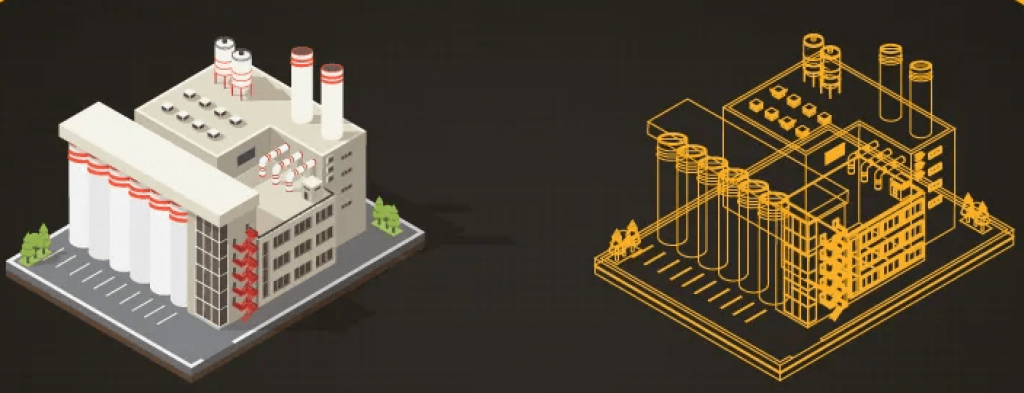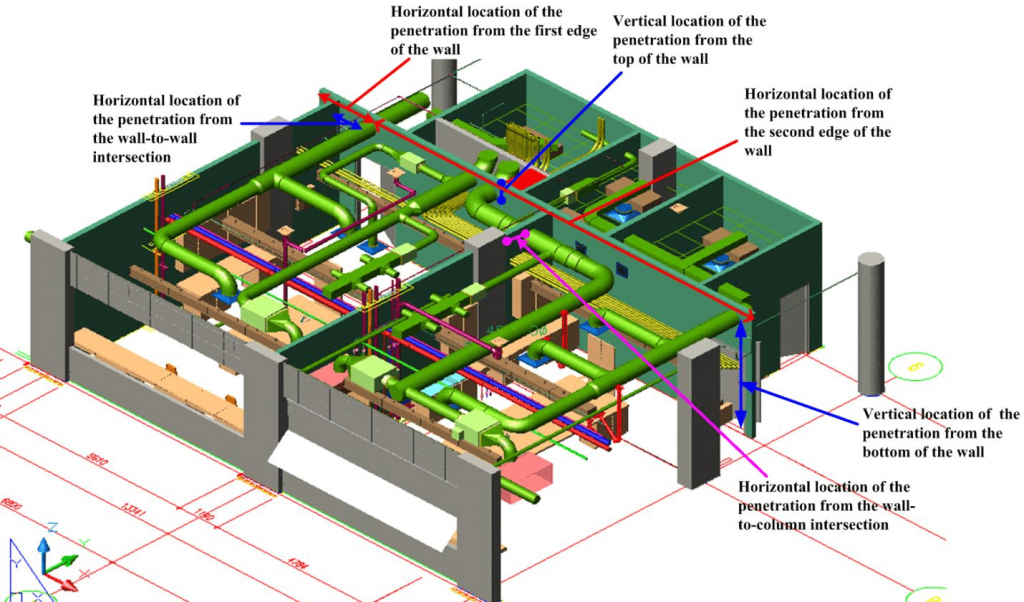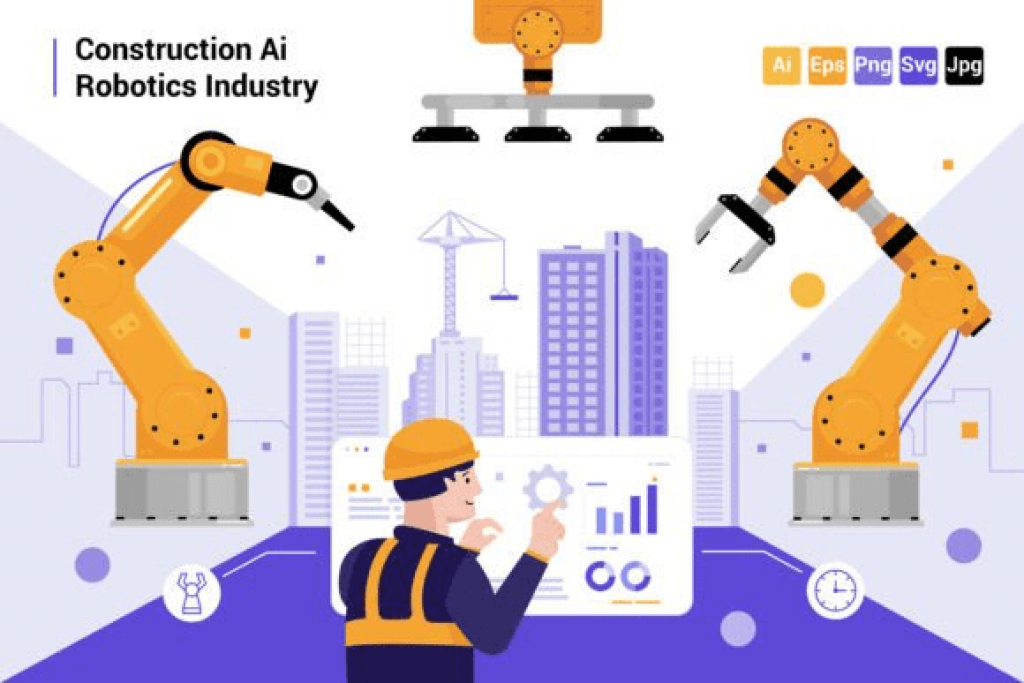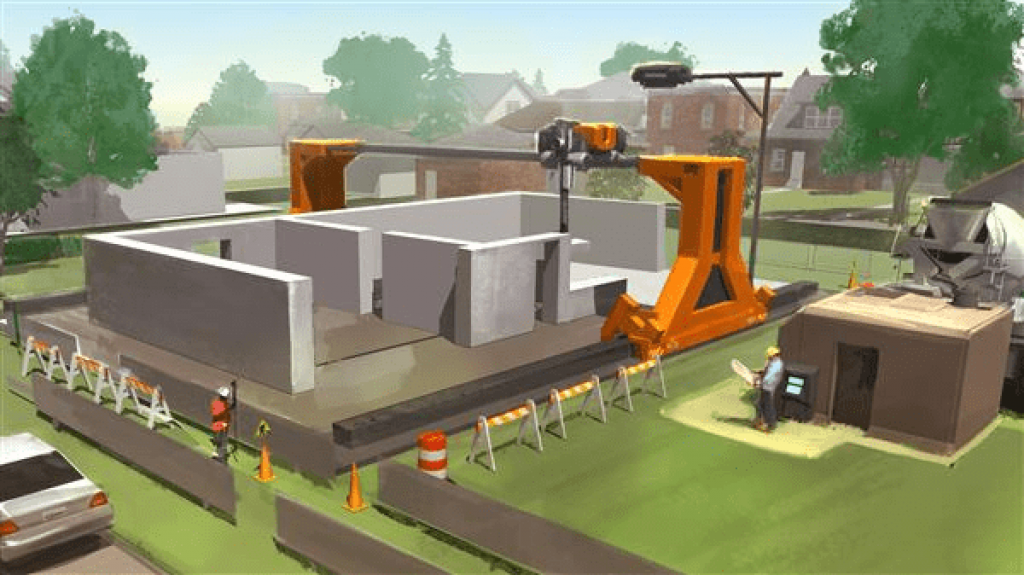Table of Contents
Being one of the most labor-intensive industries, construction faces long-standing challenges related to safety, cost overrun, delays, and labor shortage. But the usage of advanced technology allowed construction to solve most of them as effectively as possible. Now ConTech has changed the way how building projects are planned, built, and managed, bringing their owners limitless benefits. Whatever your needs are – reduce rework, boost productivity, or ensure safety of workers – construction tech covers them all.
As construction technology is growing and its options expand, choosing between the available technologies becomes a non-obvious choice for businesses. In this article, we will walk you through the main future trends of construction technology, its benefits and tangible use cases.

What is construction technology?
Construction technology, also known as ConTech, refers to the set of cutting-edge tools, machinery, modifications, software, and other resources used during various phases of a construction project. It includes semi-automated and automated construction equipment and various technologies, like Building Information Modeling (BIM), AI, 3D printing, sensor-based solutions, etc. Note though that these tools are not intended to replace skilled construction workers. Rather, they are intended to simplify the most complex, routine and dangerous aspects of construction work. A construction technology serves a specific purpose in the planning, design, and management of a construction project.
By integrating these tools into business processes, construction companies are able to address the challenges they face and improve overall construction operations. There are more reasons why the construction domain is thriving today. To better understand why, let’s look at what ConTech provides businesses with.
Benefits of new construction technology
According to Mordor Intelligence, the construction technology market is expected to reach $10.34 trillion by 2030. This remarkable growth reflects the increasing integration of technology within the sector. Here are some of the most important benefits of new construction technologies that back up these numbers:
- Increased productivity: advanced technologies, like AI and ML, help workers automate and streamline many processes, which means they can accomplish tasks more quickly and accurately, resulting in higher productivity;
- Improved safety: intelligent safety equipment, IoT sensors, wearable devices, and monitoring systems create safer working conditions, reducing the risk of accidents and injuries to workers;
- Optimized workforce: by using drones, robots, or autonomous heavy equipment, construction companies can reduce manual labor and automate repetitive tasks;
- Better collaboration: collaboration apps facilitate better and faster teamwork, ensuring that data reaches all stakeholders, and a project runs smoothly;
- Cost savings: by optimizing resource utilization, minimizing waste, and improving project planning and management, ConTech helps lower overall project costs;
- Sustainability: ConTech promotes sustainable building practices by using energy-efficient systems and innovative construction technologies, thus minimizing environmental impact and improving long-term sustainability;
- Quality control: a Building Information Modeling (BIM) technology enables detailed visualization and simulation of construction projects, enabling early detection of design flaws and errors, resulting in higher-quality structures.
The latest technology trends in construction
Let’s take a look at examples of construction technology trends that will drive the industry transformation in 2026 and further:
Digital Twinning
The digital twinning is an innovative technology that helps with operations management. As the name suggests, a digital twin is a virtual model or replica of a construction project or a physical asset. It combines real-time data from sensors and smart devices and uses it to create detailed 3D models (often derived from BIM). These 3D models allow construction teams to interact virtually with the physical property during the design and planning stages of a building’s life.
Digital twins facilitate building modeling and analysis, letting designers observe and analyze how it’s performing at the moment. Engineers can test scenarios, assess structural integrity, predict maintenance needs and optimize energy consumption – all virtually. This helps stakeholders make smart decisions to improve the performance and save energy throughout its entire lifespan. This technology can be confused with the seemingly identical Building Information Modeling (BIM). But they are quite different.

Building Information Modeling (BIM)
Building Information Model (BIM) is a 3D digital model of a building or a project, including data about materials, dimensions, costs, and schedules. BIM is used to create and manage information for a built asset before and during the construction process. It describes how a place or system works after it has been built. Unlike digital twin, it does not provide real-time monitoring. Instead, BIM relies on data provided by designers, architects, and engineers, such as what material it is made of, how big it is, how much it costs, and when it will be completed.
In other words, BIM helps engineers plan, design, and construct a structure or building within one 3D model. This helps stakeholders make better decisions during the whole project, detect clashes early on, and estimate and schedule costs more accurately. To sum up, BIM helps in planning and constructing, while digital twinning offers real-time updates and a comprehensive view of an asset. Also, digital twinning relies on BIM data but goes beyond that.
According to Markets and Markets, BIM market value is expected to reach $15.42 billion by 2030 with a CAGR of 11.3%. It means in 2026 and beyond, the demand for the latest technologies like BIM will only increase.

Drones
In the nearest future, we will see more sophisticated AI-based drones. Drones can be used to inspect job sites for possible hazards, such as unsafe working conditions or unstable structures. They help companies resolve dangerous problems before they occur, thereby ensuring employee safety.
With high-resolution cameras and sensors, drones can capture aerial images and topographic data accurately and are less expensive than a ground crew. In this way, they allow companies to gain valuable insights for planning, designing, and managing a construction project. Drones can also gather environmental data, like temperature and air quality, for a well-planned construction process as well.
Robotics and automation
As robotics is a booming technology in the construction industry, it won’t come as a surprise to see robots at your workplace soon. Isn’t that right, Elon Mask? Robotics and machinery can automate repetitive, labor-intensive, or hazardous tasks and they help companies cope with a lack of skilled workers. Robots do not tire, do not make costly mistakes requiring rework, and work faster. By doing work with or instead of humans, robots can reduce the timeline of construction projects with accuracy and improve workers’ productivity and safety.
Also, robots can perform precise measurements and cuts during construction to ensure high-quality and accurate results. Here are a few types of robots that can be used:
- Industrial robots: large and stationary robots designed to automate intensive manufacturing tasks; their positions are fixed, and all other tasks are focused around them;
- Collaborative robots: robots designed to carry out tasks in collaboration with workers;
- Robotic exoskeletons: exoskeletons increase the strength and endurance of workers, reduce fatigue, and prevent injuries, allowing them to work more safely and efficiently;
- Robotic arms: mechanical arms can be programmed to perform multiple tasks, like demolition, concrete pouring, and assembly, thus increasing speed and accuracy of work.
We’re going to see more robotics applications in the construction domain in the future. Even though the implementation of robots can be costly, they will save the company a lot of finances in the long run.

Autonomous heavy equipment
Autonomous heavy equipment refers to machinery and vehicles used in construction that operate without direct human control. These machines leverage technology, such as sensors, AI, GPS, and automation, to navigate construction sites and conduct site work. The machines can also be used for grading, excavation, material transportation, road construction, drilling, and many other tasks. Here are a few examples of autonomous heavy equipment:
- Excavators: autonomous excavators can perform tasks without direct human control, thus enhancing precision and reducing the risk of accidents;
- Dozers: earth-moving machines designed to push earth or rocks and to improve efficiency on construction sites;
- Robotic Bricklayers: these automated machines lay bricks accurately and quickly, streamlining the construction process.
This machinery allows companies to accomplish the same work as before but with fewer workers. This, in turn, helps reduce labor costs and operate continuously without breaks and delays.
3D printing
3D printing technology offers a more sustainable, efficient, and cost-effective alternative construction method. The technology allows for the creation of a 3D model or components of a building using a layer-by-layer approach. It is, therefore, suitable for creating complex architectural designs and geometric shapes. This layer-by-layer approach allows for precise control over the shape, size, and properties of the printed object.
3D printing can also be used to create building materials. As a result, 3D printing reduces construction costs, speeds up construction, and allows for complex and customized designs. Beyond that, materials can be printed off-site (walls, columns) and transported directly to the construction site. The process reduces the need for on-site assembly and speeds up construction as well.

Artificial Intelligence
AI and ML find numerous applications in construction projects as they provide meaningful insights from Big data. ML algorithms can analyze historical data, trends, and changes in the construction market to estimate project budgets more accurately. Also, AI-powered systems can identify potential risks and unsafe behaviors on construction sites with data from sensors, cameras, and wearables. By alerting workers and supervisors in real-time, AI helps prevent accidents and maintain worker’s safety.
ML models can predict when construction machinery requires maintenance. By doing so, companies can prevent unexpected breakdowns and cut repair costs. In tandem with robots, AI helps to monitor site progress in real time. AI-powered systems and drones equipped with high-definition cameras photograph and scan the construction site daily. Then, they compare results against BIM models, 3D models, schedules, and estimates to determine how much progress has been made. Hence, AI brings to construction projects increased accuracy, speed, workflows, cost management, and a high level of workers’ safety.
Augmented Reality (AR) and Virtual Reality (VR)
Companies use Virtual Reality training to simulate harsh, dangerous working conditions for employees. It helps companies minimize accidents and injuries among workers. Aside from that, VR is often combined with BIM to create an immersive experience for exploring complex buildings. In other words, BIM specialists create a 3D model of a building so customers can walk through and interact with it virtually. This allows stakeholders to see the finished project in advance and find potential flaws, eliminating changes during construction in the future.
In construction, VR and AR technologies are often used together to provide immersive simulations of buildings and structures. While some companies utilize VR headsets for more in-depth construction planning, AR allows users to overlay digital models on physical spaces, showing how the process will look when finished. The combination of AR and VR allows specialists to visualize and implement changes in real-time, making project planning more accurate.
Wearables
Wearable devices have become a buzzword technology, making construction more secure, efficient, and ultimately more satisfying for workers. Wearable tech is being incorporated into clothing and personal protective equipment (PPE) already used on construction sites. The technology uses biometric sensors, GPS trackers, Wi-Fi, a Global Positioning System (GPS), and other sensors to collect needed data about either workers or their surroundings. Using this technology, managers can monitor employees’ health status, productivity, and location, which may pose a safety risk.
Moreover, wearable tech can monitor vital employee metrics like heart rate, body temperature, fatigue levels, and exposure to hazardous substances or environments. By analyzing collected data, supervisors can identify potential health and safety risks and implement preventive measures. Also, wearables can determine if workers are tired, intoxicated, or under the influence of drugs. It is possible to predict work-related accidents before they occur and make sure employee well-being during work.
As you can see, there are a variety of emerging technologies in construction today. But how do you choose between them?
Bonus: how to select the most suitable construction technology
More and more construction companies, such as Buildots, Akselos, and Build Robotics, are turning towards technology to streamline their operations. However, the selection of the right fit for business needs requires a strategic approach. To help you make your decision-making about ConTech easier, here are some of the main points to consider:
- Objective: identify the key challenges and setbacks that your construction company faces. By doing so, you’ll be able to determine its primary purpose.
- Features: consider what would address and improve gaps in your current processes. Thus, you will be able to decide on functionality for your upcoming construction project for current and future needs.
- Cost and ROI: assess the overall cost of implementing a tech solution and evaluate the potential return on investment (ROI). Weigh the upfront cost against long-term benefits.
- Product usability: determine whether a tech solution is easy for employees to learn and use.
- Product support options: make sure the vendor offers comprehensive support and assistance services, such as training, troubleshooting, and ongoing customer service.
- Security measures: ask vendors about security options, technical support, and updates to ensure that your data remains protected.
- Compatibility: ensure technology will integrate seamlessly with your existing infrastructure. While some tools (like drones) may stand alone, others – such as software – must work seamlessly with other departments’ systems.
The choice of construction technology is not just about features – it is about aligning them with a business’s unique requirements. Keep in mind, regardless of the construction tech solution you choose, it should solve problems, not create them.
Final Thoughts
In the future, the new technologies in construction are likely to become more widespread. And while some of these technologies are still in their infancy, they already show great promise for the future. Keep in mind that it is not enough to invest in the latest construction technology trends; to take real advantage of them, it is essential to choose the right ones and adopt and leverage them strategically. Whether you need a consultation about new technology, update or modify to the previous one, SoftTeco’s specialists will do it all within your budget and time. As time goes on, for a company to maintain its competitiveness and grow, construction technology will become an integral part of its arsenal.


Comments